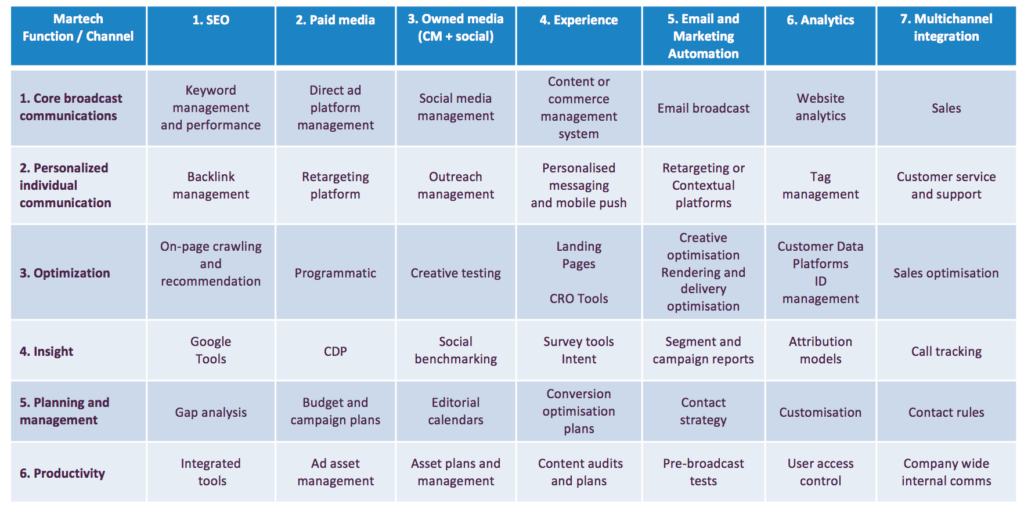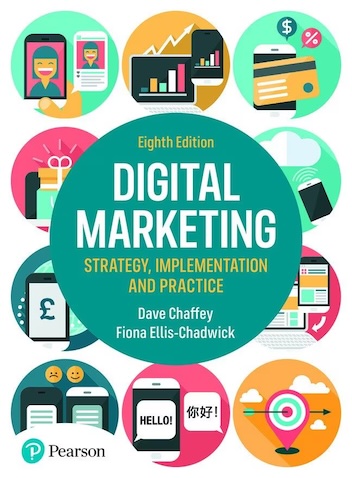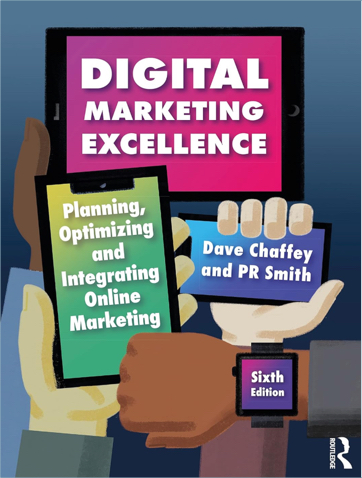A marketing technology stack is the combination of different software services or tools used to run all marketing operations including customer acquisition, conversion, retention, team communications, and to deliver customer and market insight and reporting.
Our Martech infographic helps audit and define key parts of a martech stack by considering tools that can be used across each part of the RACE model.
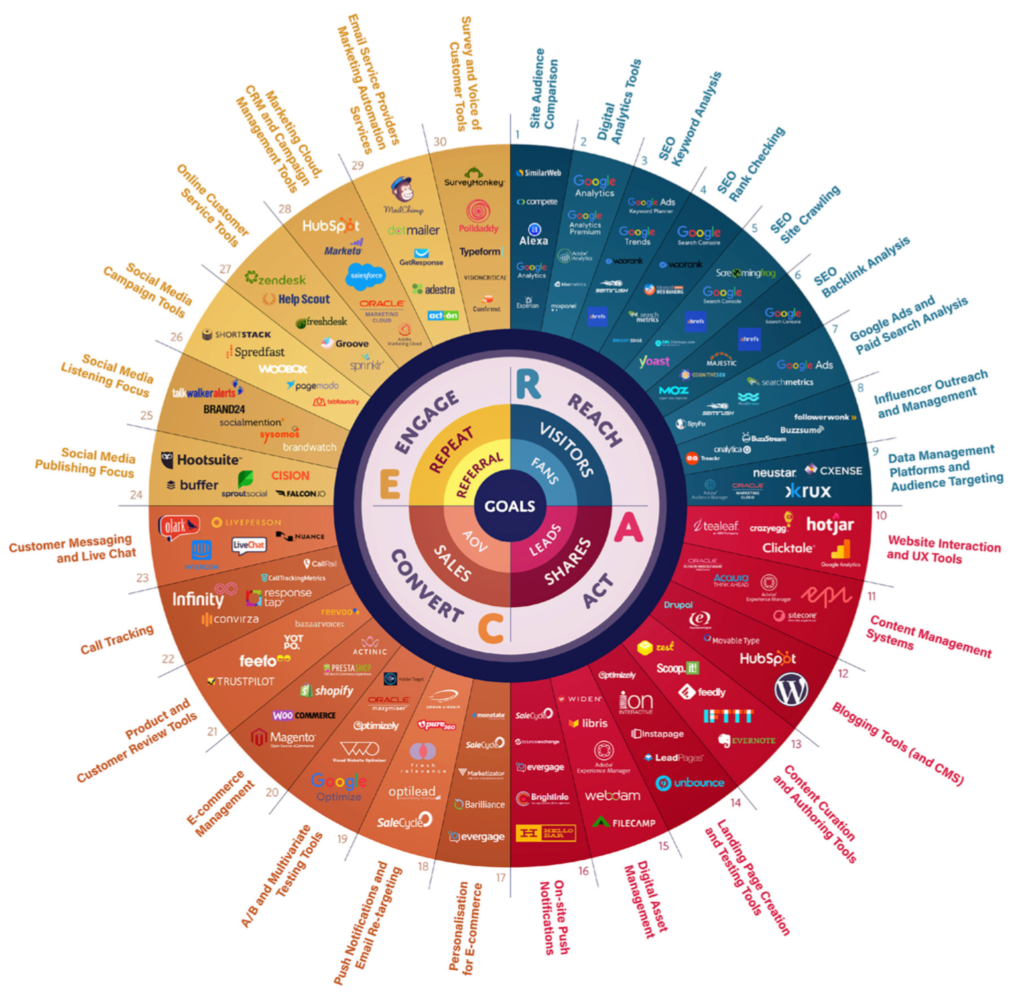
Note: We’re not suggesting you need all of these tools shown by each icon. Rather, a medium to large transactional e-commerce business will likely need a tool from each of the thirty categories.
Lower cost or simpler tools with free versions suitable for smaller businesses and startups are shown around the edge. Higher cost, more extensive enterprise versions are shown towards the middle.
A tool for auditing martech stacks
Since I’m always looking to simplify, which is particularly important for startups and small businesses who are unlikely to be able to need or afford all the tools shown in the wheel, I have created this simpler audit tool to review and plan a martech stack.
Here the different columns summarize core marketing techniques which can be supported by martech tools. These include digital media, digital experiences, digital messaging and content management.
Each row shows different functions needed for tools to manage these channels.
- Row 1 is the essential broadcast tools for all business.
- Rows 2 to 4 are for when businesses are getting more sophisticated and they add-in tools for personalization, optimization and insight.
- Row 5 is for planning communications via the types of templates available from Smart Insights.
- Row 6 covers the productivity tools relevant to all businesses.
Example marketing technology stacks
To help review your marketing stack, mindtools like our wheel and the Lumascapes are useful, but they often have too many categories for services to be reviewed on a single page ‘at a glance’.
As an alternative, you may find it useful to consult the latest ‘Stackies’ which are a competition run by Scott Brinker as part of his US Martech events.
Here are some of the winning entries to show you some alternatives for structuring an audit of your martech stack. Even these three examples I have picked to show a different focus are radically different, with a different emphasis.
Juniper example martech stack – focus on management of activities
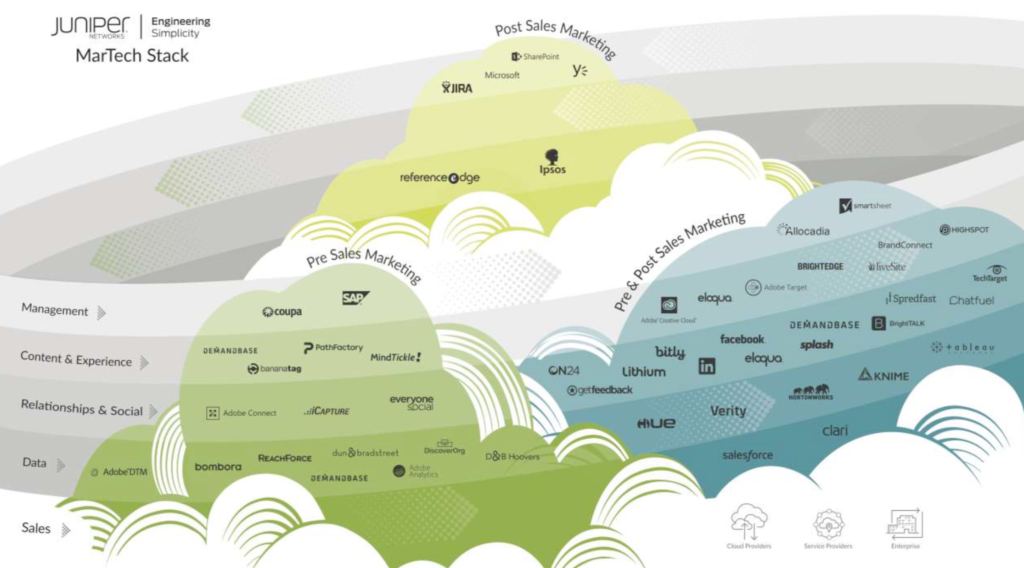
NextIny – Marketing lifecycle based (similar to RACE)
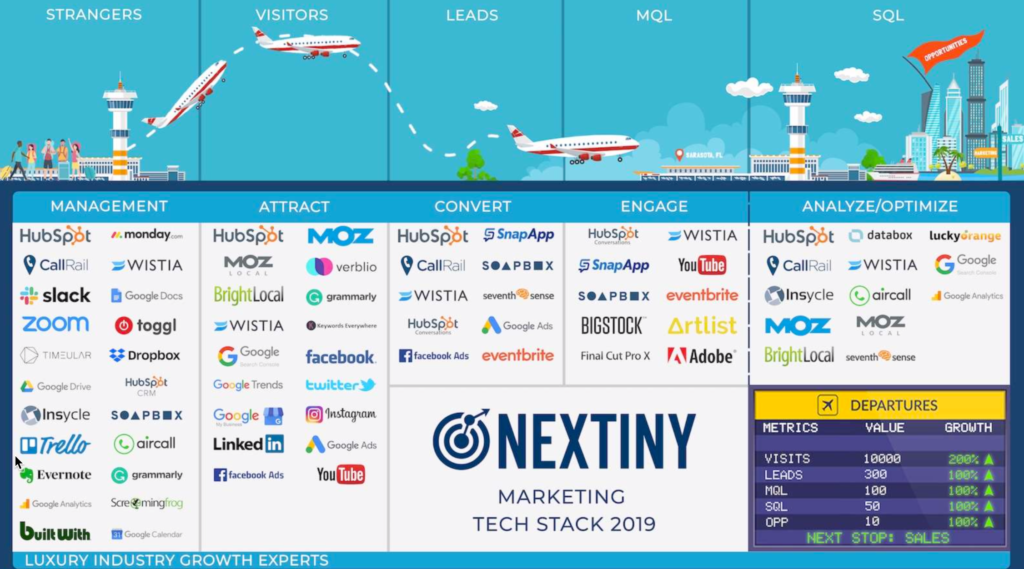
Juniper example – focus on management of activities
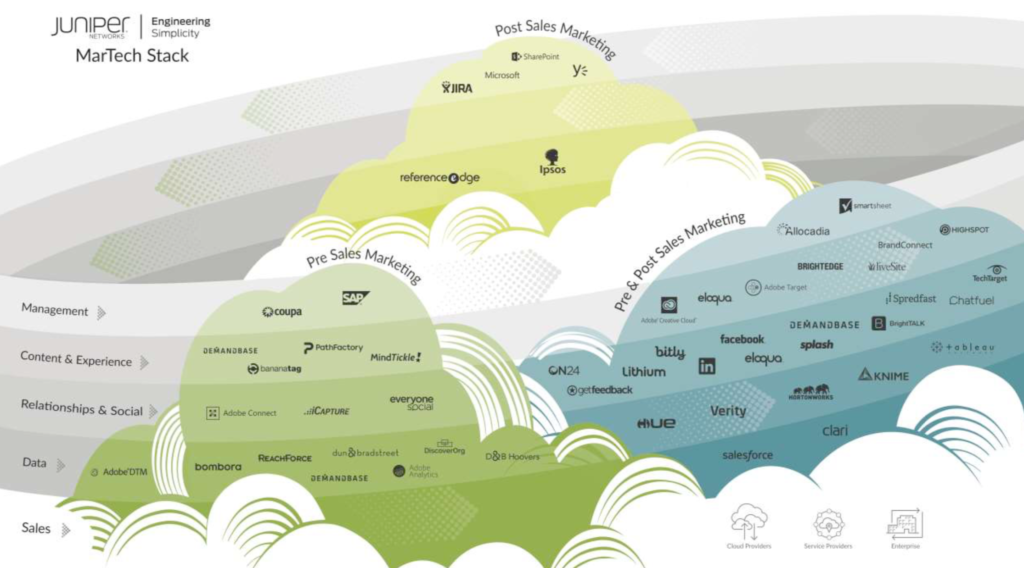
Features of the ideal Marketing Technology stack
So now, learning from these examples and returning to the question in the title of this article, what are the features of the ideal stack? Here are some key issues I recommend considering when improving your martech stack:
- Full lifecycle for managing marketing operations covered. It’s clear that you should design your martech stack such that it covers all the activities across customer acquisition, conversion and retention. The Smart Insights technology wheel is structured this way as is the NextIny Martech stack. However, less mature organizations may focus more on customer acquisition.
- Tools providing insight as well as managing operations. The Brinker supergraphic mainly focuses on technologies for supporting marketing applications such as media buying and marketing automation. However, it also useful to consider the analytics and insights available. Dedicated tools can offer improved insight to identify gaps to exploit that competitors haven’t considered. For example, ClickThrough Marketing (an agency I work for) clients benefit from tools such as Kenshoo for paid media and BrightEdge for organic search.
- Collaboration and productivity tools should also be included*. Apart from specialist Martech tools, businesses also use other tools for managing their internal communications (e.g. Slack, workflow and project management (e.g. Basecamp or Asana). It makes sense to consider how these integrate with the martech tools also.
- Data integration is a key requirement. With so many different tools, each using their own data model for prospect and customer data and analytics it’s essential to consider which data needs to be shared between tools.
- Attribution within analytics should be considered. One specific aspect of data integration that should be considered is attribution of leads and sales to the marketing channels that generated them. Since many services including Google Analytics use a ‘last-click’ model of attribution by default this may be misleading in assessing the value contributed by media that generate awareness at the top of the funnel. Google has its own attribution modelling tools, but other services including those linking to independent tag management tools like Ensighten and Tealium may help here.
- Services selected reflect the scale and maturity of the organization. Larger companies with more staff accessing services typically have more sophisticated needs in terms of number of products, numbers of territories they are operating in and features needed.
- Use Marketing Cloud services to improve integration and ROI. Although separate services are available to support the 30 different marketing activities shown on our wheel, it’s logical to buy a single software suite, often known as a Marketing Cloud which covers many of these activities. These services should also give benefits of integrated reporting and analytics. However, many of these services from the likes of Adobe, IBM and Oracle have enterprise-level fees, so it may be more effective for smaller businesses to use separate services and they may have better ‘best-of-breed’ features. For example, at ClickThrough Marketing we use VWO for AB Testing. However, Marketing Cloud services like HubSpot and Salesforce may be within the reach of smaller organizations
- Consider AI and machine learning innovation. Artificial Intelligence has many potential marketing applications which will become more relevant for businesses as the technology improves and they master the basic digital marketing techniques. So, considering the roadmaps of providers for these technologies is recommended when deciding between vendors.
